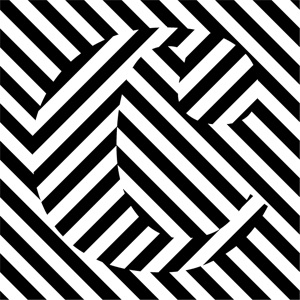Additive Manufacturing & Opportunities for Design | Article
Design & Make
Additive Manufacturing for final products mights reduce the product development time and costs due to the immediacy of the production process, creating an opportunity for the product design industry to design tools and systems to create products with parametric values and custom-defined features.
Background
Referring to Additive Manufacturing as “the process of joining materials to make objects from 3D model data, usually layer upon layer, as opposed to subtractive manufacturing methodologies, such as traditional machining. Commonly known as 3DPrinting, additive fabrication, additive processes, additive techniques, additive layer manufacturing, layer manufacturing and freeform fabrication”
Paying special attention to the usage of Additive Manufacturing to create final products, not prototypes. Understanding final products as: “objects ready to use by people”
Digital Fabrication refers to the process of translating digital design into a physical object.
Tools to enable digital fabrication include existing ones like CNC milling, LaserCutting and all computer controlled machines. A relevant part of Digital Fabrication tools & processes include the Additive Manufacturing, commonly know as 3D-Printing, which include SLS, SLA, FDM among others.
A next step on Digital Fabrication is when computers don’t just control tools to manipulate matter, but they compute the matter directly; example: a wood log is a series of atoms arranged in a particular way, if you could arrange those atoms in another way, theoretically you could reshape that wood log into a wood chair, so we could have computers to send instructions to matter to adopt certain shapes and behaviors, all digitally. Experiments are under development to computer control the way molecules are arranged.
Digital Fabrication is not just about the tools, but about the transformation on how goods are designed and made, and the socio-cultural changes that this imply.
As an analogy to what Personal Computing meant in the past 20 years, now we can talk about a Personal Factory, where people will have access to production processes.
Making products with Additive Manufacturing
Additive Manufacturing shortens radically the time from design to production, making the product development & production process quicker than ever. When it takes almost no-time to from a finalized design to a real product,
This reduces the cost of change, meaning that changes on the design do not exponentially add costs to the final product.
In a traditional mass manufacturing approach, the design stage had to define and finish the design of a product as accurate as possible because after that was done, a whole set of time and cost consuming steps took place: design verification, engineering, tooling, manufacturing tests, first batches…
Using Additive Manufacturing to produce final product, those steps are shortened in time and cost: From digital design to 3D-Printed piece takes almost no time. (excluding printing time which is being reduced drastically as the additive manufacturing tools technically evolve.
Designing for Additive Manufacturing
If we understand that a product made via Additive Manufacturing has reduced product development associated time and costs, we can question the product design process. Traditionally, product design task was to define a product as much as possible in order to avoid future changes and modifications, but when those changes and modifications don’t necessarily imply exponential rise of time and costs, why design should totally define a product’s shape & details?
Additive Manufacturing for final products offers the chance to the design industry, to approach the design process differently and define rules instead of products, parameters instead of shapes & details. Generative Design, Parametric Design and direct 3D manipulation interaction interfaces might be the tools product design can use to design for Additive Manufactured products.
Following, a set of examples that take a parametric and user-defined design approach:
Ring.ShapeWright
by: macouno / Dolf Veenvliet
http://ring.shapewright.com/
iRing
by: Dr. Eyal Nir, founder of ParaCloud
iRing3d.com/
Beautiful Modeler
by: Karl D.D. Willis
http://interactivefabrication.com
Endlessforms
by: Jeff Clune, Jason Yosinski, Eugene Doan & Hod Lipson from Cornell University
http://endlessforms.com/
Be Your Own Souvenir
by: http://www.blablablab.org/
L’Artisan Electronique
by Unfold Studio. Design for performance at Z33 art gallery.
http://unfold.be/pages/5/items/90






